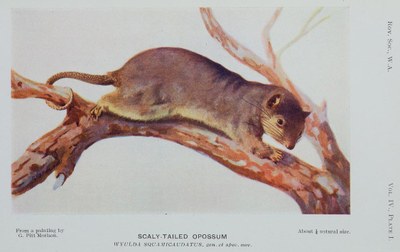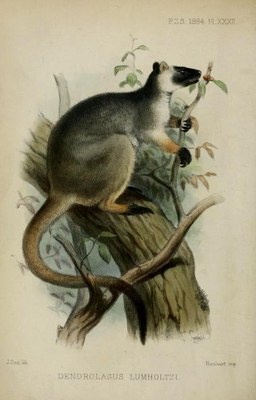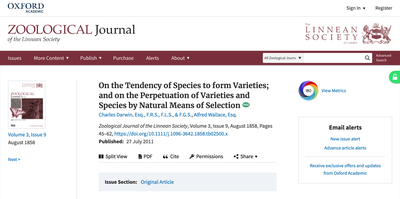Historic literature, DOIs & PIDapalooza
This blog post is written by our FREYA ambassador Nicole Kearney, Manager, Biodiversity Heritage Library Australia, a project funded by The Atlas of Living Australia and hosted by Museums Victoria
In January 2019 I had the wonderful opportunity to travel from Australia to Dublin to attend and present at PIDapalooza, the festival of persistent identifiers. As the manager of the Biodiversity Heritage Library (BHL) in Australia, I usually attend conferences about libraries, archives and biodiversity, but at PIDapalooza I finally found my niche. This is because I have spent the last few years becoming increasingly obsessed with PIDs.
I work with Australia’s museums, herbaria and natural history publishers to digitise their biodiversity heritage literature and make it openly accessible online. We digitise beautiful rare books and hand-written field diaries, but our primary focus is journals. Almost all of our contributing organisations publish an in-house journal. Many have long publishing histories with journal runs over 100 years and many are still actively publishing today.

The Scaly-tailed Possum (Wyulda squamicaudata) was described in 1919 as a new species (and a new genus) in the Journal of the Royal Society of Western Australia. Alexander, WB 1919, ‘A new species of marsupial of the subfamily Phalangerinae’, Journal of the Royal Society of Western Australia, vol. 4, pp. 31-36 https://www.biodiversitylibrary.org/page/43753221#page/44/mode/2up
Most of the material I deal with is pretty old, but in 2016 I started a project to increase the amount of in-copyright Australian content available on the BHL. Eighteen of our Australian contributors have now granted us permission to upload their in-copyright publications, some allowing us to upload articles published as recently as the current year. When I started working with their recent publications, I realised we would now have to deal with a new piece of data that hadn’t existed for their back issues – DOIs.
This got me thinking. The beauty of the DOI system is that it creates a linked network of scholarly research that allows readers to link from article to article in a never-ending trail of knowledge. Or it would be never-ending if every article ever published had a DOI. Unfortunately, much of our historic literature sits outside this linked network, thereby representing dead ends (or at least annoying setbacks) in the quest for information. Thus, in 2017, I started working with the publishers of Australia’s natural history journals to assign DOIs to the articles in their back issues.
However, much of the early literature about Australian biodiversity was not published in Australia. Australia was settled by Europeans in 1788 and the first scientific descriptions of most of Australia’s common plants and animals were published in European journals. Most of these journals are still in publication today, primarily by commercial publishers. These publishers have begun to provide an invaluable service to the back issues of these journals; they have put them online and minted a DOI for every article, thereby bringing 100s of years of scientific discovery and research into the modern linked network of scholarly publishing.

The first description of Australia's Lumholtz's Tree-kangaroo was published in the Proceedings of the Zoological Society of London in 1884. Collett, R 1884, ‘On some apparently new Marsupials from Queensland’, Proceedings of the Zoological Society of London, vol. 52, no. 3, pp. 381-389 https://doi.org/10.1111/j.1096-3642.1884.tb02840.x Open access version: https://www.biodiversitylibrary.org/item/96832#page/476/mode/2up
I spoke at PIDapalooza about the importance of bringing this historic literature into the DOI system. I also raised the issue of commercial publishers putting out-of-copyright content behind paywalls, particularly when they hold the definitive (DOI’d) version of that content. Much of the out-of-copyright content on commercial websites is freely accessible elsewhere. However, all Crossref members are required to include DOI links in every citation in their own publications. Wikipedia is also encouraging its editors to include DOI links in references to the primary literature. This means that when the DOI’d version of an out-of-copyright article is behind a paywall, both researchers and the general public are directed to that version.
There is (currently) nothing (officially) stopping anyone from registering a DOI for an out-of-copyright article and putting “their” DOI’d version (the version everyone else must cite) behind a paywall on their own website. But I think there should be. Or at least I think there should be recommendations to encourage publishers to do the right thing when it comes to content that is in the public domain. This wasn’t such a big deal before the DOI system came into being. But because the DOI systems works so beautifully, any efforts to put open access versions of articles online are pointless if a DOI’d versions already exists behind a paywall. And this worries me because I manage a national project that is part of global effort to put the world’s historic literature online in order to make it openly accessible to everyone.
PIDapalooza brought together representatives from the DOI foundation, the DOI registration agencies, online publishing, digital libraries and funding agencies. It was the ideal audience with which to share and discuss this issue. In my talk, I highlighted the fact that the definitive (DOI’d) version of the 1858 article written by Charles Darwin and Alfred Russel Wallace, presenting their theory of evolution via natural selection, was behind a paywall. At the end of my presentation, I was approached by a staff member from Oxford Academic, who host this version with the DOI, and we talked. The paywall has now been removed and this article – arguably the most significant paper ever published in the history of biology – is now open access (thank you Oxford Academic and Oxford University Press).

Charles Darwin and Alfred Russel Wallace’s momentous 1858 paper is now open access on the Oxford Academic website. Darwin, C & Wallace, AR 1858, ‘On the Tendency of Species to form Varieties; and on the Perpetuation of Varieties and Species by Natural Means of Selection’ Zoological Journal of the Linnean Society, vol. 3, no. 9, pp. 45-62 https://doi.org/10.1111/j.1096-3642.1858.tb02500.x
This is a significant step in the right direction, but it’s just one article. There have been some other small steps. For example, Wiley Online now has a whole open access collection celebrating of Alfred Russel Wallace. It would be wonderful if the definitive (DOI’d) versions of all out-of-copyright articles could be made open access. The historic literature is the foundation upon which our understanding of biodiversity is based. What a huge difference it would make it everyone could read it.
I would like to thank the FREYA Project and the FREYA Ambassador Program for funding my flight across the world and my registration for PIDapalooza.